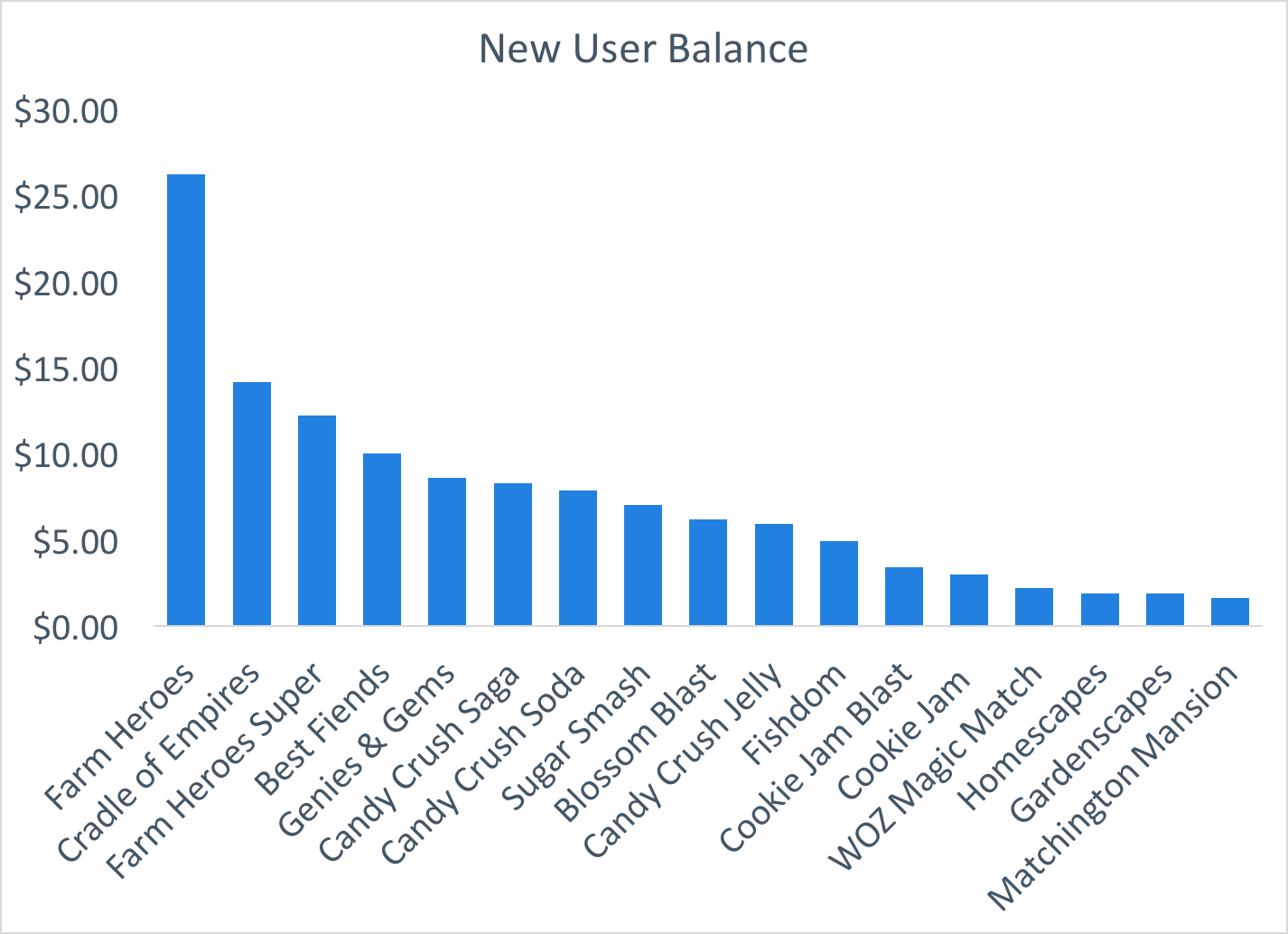New User Balance
The New User Balance is the amount of value a player receives upon installing the app
- The value includes all lives, currencies, and boosts a player either has upon install or receives after completing the tutorial
[envira-gallery slug=”new-user-balance”]
- The New User Balance should be heavily influenced by the overall strategy of the app (and company). More tactically speaking, the tuning should be tight if you want to monetize players early. This will give you earlier indications of the success (or failure) of the app; important information for companies with smaller pockets. The opposite is obviously true for deep pocket companies—and this should be used as a competitive advantage. Consider tuning the New User Balance loosely to drive early retention and focus on longer-term monetization
- For new apps, the New User Balance should be positioned against the core competitor (if adopting a positional strategy). Matchington Mansion is a good example: their economy was tuned slightly tighter than Gardenscapes and Homescapes. They made the app slightly tougher to beat (predicting that players wanted a harder experience)
[pigeon_protect]
Potential Daily Value
The Potential Daily Value is the estimated amount of value that players receive free each day
- The Potential Daily Value includes the primary, secondary, and tertiary bonuses. It also includes lives, currencies, and boosts
- The payout of each feature is the average of 5 collections of that feature. The time per day players may collect free stuff is 8 hours (this is adjustable in the spreadsheet)
- The Potential Daily Value below does not include Watch-to-Earn (W2E). That information, however, is included in the excel spreadsheet
[envira-gallery slug=”daily-value-less-w2e”]
Key Takeaways
- The Potential Daily Value is largely based on the number of hours you believe a player can collect bonuses. In the downloadable excel spreadsheet, this period is easily adjustable. Consider building out multiple economy scenarios for light, medium, and heavy players (and do not underestimate how often heavy players play)
- A key drive of the Potential Daily Value is your game’s core monetization feature. If monetization comes from the meta-features, then a larger Potential Daily Value should be considered to give players time to play the game (and vice versa)
- Another thing to consider is the difficulty of play. Some players actually want more difficulty. This is seen in Homescapes, where a small amount is given out daily
Currency Conversion
The Currency Conversion converts each item to a dollar value. The conversion process starts with the primary currency non-sale $1 package amount (or nearest package to $1) as the baseline
- Other items are then converted from the primary currency using the buy page, dialogues, and other app-provided conversion information
- Boosts are included in this conversion. The value of boosts received is most often based on the cost of primary currency used to acquire that boost
[envira-gallery slug=”primary-currency-conversion”]
Key Takeaways
- Increase the complexity of the currency system to obfuscate the value of certain items. Without knowing the real value of an item, players are more likely to spend the item (and the money that was potentially spent to acquire that item). This is a very similar concept to Credit Cards (see, the MIT Sloan study, “A Further Investigation of the Credit-Card Effect on Willingness to Pay”)
- Multiple currencies also allow more involved players to try and trick the system. Let them trick it. This is a major reason why players will pick one app over another: they believe they are receiving some kind of deal
- Simpler systems, however, appeal to a broader audience and should be considered for more casual Puzzle apps. This is cheaper to develop with less to implement and balance
Puzzle Economy June 2018[/pigeon_protect]
[pigeon_display_when access="disabled"][st_icon_box background="#e7e7e7" opacity="1" icon="icon: unlock-alt" icon_color="#ffffff" icon_bg="#444444" border_color="#eeeeee" icon_spin="no" icon_position="icon-top"] To continue reading, you must be a subscriber. Pleaselogin here Subscribe for access to all Puzzle analyses and information from Liquid and Grit.- Product and level design innovations
- Stay in the know of any notable features
- Understand up-and-coming trends
- Dig deep into a database of features, live ops, and machines

